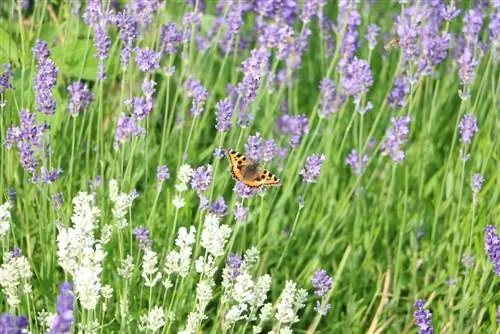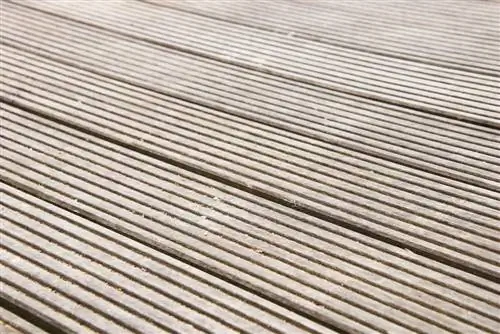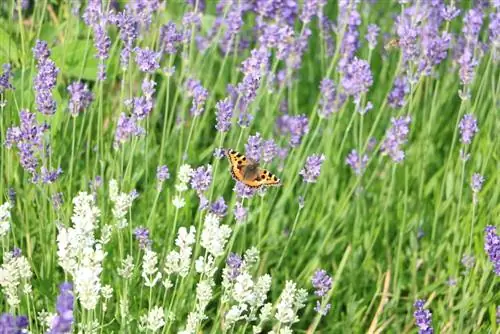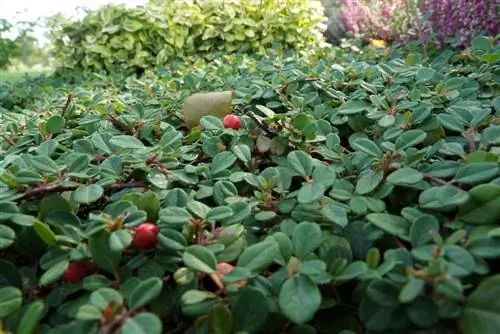- Author admin [email protected].
- Public 2023-12-17 03:39.
- Last modified 2025-01-24 12:45.
The lavender of Tuscany, which smells far across the fields, is also very popular as a plant in the garden in these latitudes. In addition to the intoxicating scent that it exudes in summer, it can also be used processed in the kitchen and in the house, for example as a room fragrance. But the bright purple flowers also transform your home garden into a touch of Tuscany and a holiday feeling. So every hobby gardener can create their own retreat with a few lavender plants.
Profile
Lavender belongs to the mint family and is a shrub that is mainly found in the Mediterranean region, such as Tuscany in Italy. Here the medicinal plant is grown in wide fields. In summer, entire areas of the country are bathed in the bright purple color of the numerous flowers, and an intoxicating, intense and characteristic scent also blows over the fields. The plant got its name from the Romans, who already recognized the benefits of lavender and used it as a bath additive. But the essential oils obtained from lavender are also often used for a pleasant room scent, against moths in the wardrobe, in medicine or even in the kitchen. Here are some more interesting facts about the popular herbal plant:
- around 40 different species are known
- up to 4 cm long, thin but tear-resistant leaves
- young leaves have a gray-blue color
- feel felty and soft
- older leaves are green
- violet inflorescences several centimeters long, so-called false spikes
- Fruit after flowering resembles a brown nut
- Continuous bloomers
- blooms between May and well into autumn
- gets about 50 cm to 150 cm tall
- perennial plant
- can live between 15 and 20 years if well cared for
- Lavender oil has a pain-relieving, antispasmodic and immune-boosting effect
- also has a positive effect on the psyche when inhaled
- is grown in the Mediterranean for further use due to these positive properties
- more popular as an ornamental plant in local gardens
- can be cultivated in the garden bed or in the pot
- only “real lavender” is hardy
Care

The ideal location for the easy-care lavender is a place in the sun, because originally native to the Mediterranean countries, it is used to full sunlight. The medicinal herb can be cultivated in the garden bed or in the bucket. Since it requires little water and nutrients, care is very easy. When planting a new lavender, however, it should be noted that normal commercial potting soil is not suitable. Therefore, normal garden soil should also be used for the bucket. Otherwise, the following should be taken into account when caring for lavender:
- Choosing a location on a slope ensures that excess rainwater can drain away quickly
- Before planting, enrich the soil with sand for better permeability
- best planting time is March
- water moderately, hardly fertilize
- When fertilizing, use low-nitrogen fertilizer
- If you cut back after flowering in autumn, do not cut into the old wood
- for lush growth, cut in spring after frost, now also remove dried or woody parts
- If the lavender is not cut in spring, it will no longer develop new shoots
- he becomes unsightly and brown
- leaves and flowers are no longer formed in the woody areas
- " real lavender" can be planted in the garden bed as it is hardy
- other lavender varieties are better cultivated in a pot, which can be brought indoors in winter
- Lavender in your home garden can also be harvested
- Harvest time is when the middle part of the panicle is covered with flowers
- to do this, cut the entire branch tip approx. 10 cm below the flower
- The best time to harvest is midday, when the sun is at its highest
- harvest only when exposed to sunlight
- Avoid harvesting in rainy or overcast weather
Tip:
Even if some gardening guides mention roses as good neighbors for lavender, do not plant lavender near roses, because these two plants do not go together as they both have very different requirements for their location.
Flowering time Germany
The first lavender flowers appear as early as May with a mild climate and good weather. Depending on the type, such as crested or silver leaf lavender, the flowering period can extend well into October. However, the normal flowering period is between June and the end of August. Above all, the cut is crucial to how long the hobby gardener can enjoy his blooming lavender:
- in the spring months, when there is no more frost
- therefore cut at the end of March or beginning of April before budding
- cut in summer before the first flowers fade
- this gives the lavender the strength to bloom a second time
- In this way the flowering period can be significantly extended
- However, only carry out this summer cut in warmer regions
- In colder regions only remove the wilted flowers
- prune in the fall before frost so that plants grown in the bed survive the winter undamaged
Tip:
A blooming lavender on the terrace or balcony not only smells pleasant, this scent also keeps insects away from the seating area in summer.
Flowering time in Tuscany
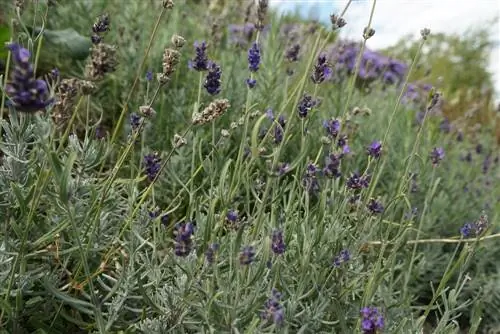
The flowering time of lavender in the Mediterranean region is mainly summer and therefore the months from June to August. Since it is primarily the flowers that are harvested in the fields for further use, this naturally happens during the peak of flowering in these months. If the lavender plants in Tuscany are only cultivated in the garden and are not harvested, then the flowering can last until late autumn, into October. If you would like to experience lavender at its place of origin in Tuscany, you should use the time between June and July to take in the vast purple fields and the beguiling scent.
Conclusion
Lavender does not only thrive in the warm Mediterranean countries. With appropriate care, which is not time-consuming, it can transform the garden or terrace into a Mediterranean retreat, even in these latitudes. The pleasant scent that the plant exudes can help the hobby gardener and his family forget the stress of the working day in the evening. This means that lavender in home gardens is not only an eye-catcher with its long blooming period of purple inflorescences. Of course, lavender can also be harvested in your own garden and, for example, filled into small bags in the wardrobe can be of good use against moths.

